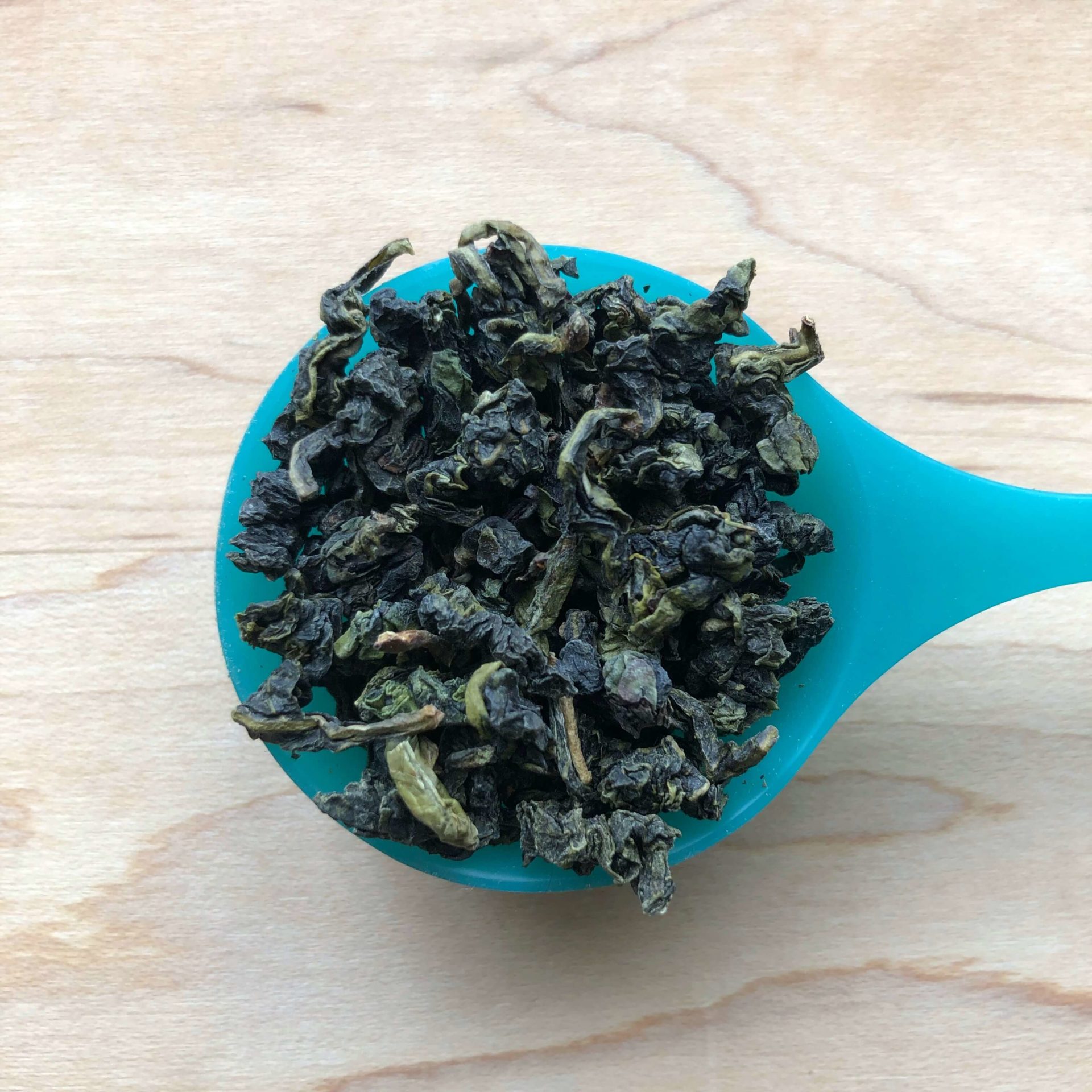
I was craving an oolong because I wanted a tea to drink with the dim sum I was eating at lunch.
Description: “The first infusion has a succulent sweetness with later infusions leading to green floral notes. Each time you infuse the leaves different subtleties are revealed.“
Instructions: 2-4g per 150ml | wash leaf with 212°F (100°C), then use same (slightly cooled water to infuse) | Infuse 1-2 minutes, tasting regularly | Infusion at least three times*
Review: I picked on this oolong because Iron Goddess (Tie Guan Yin) is a tea that is commonly served during dim sum. When it came to brewing the tea, Rare Tea Company had multiple suggestions, so I decided to brew this tea using a shorter* (3 infusions) and longer gongfu (6 infusions) method.
The Iron Goddess was lightly roasted and tightly rolled. The tea balls were a forested green colour with lighter green steams and tips. The tea had a steamed vegetable, spinach, and grassy smell.
Short Gong Fu Session (Three Infusions – 3 to 4g per 150ml):
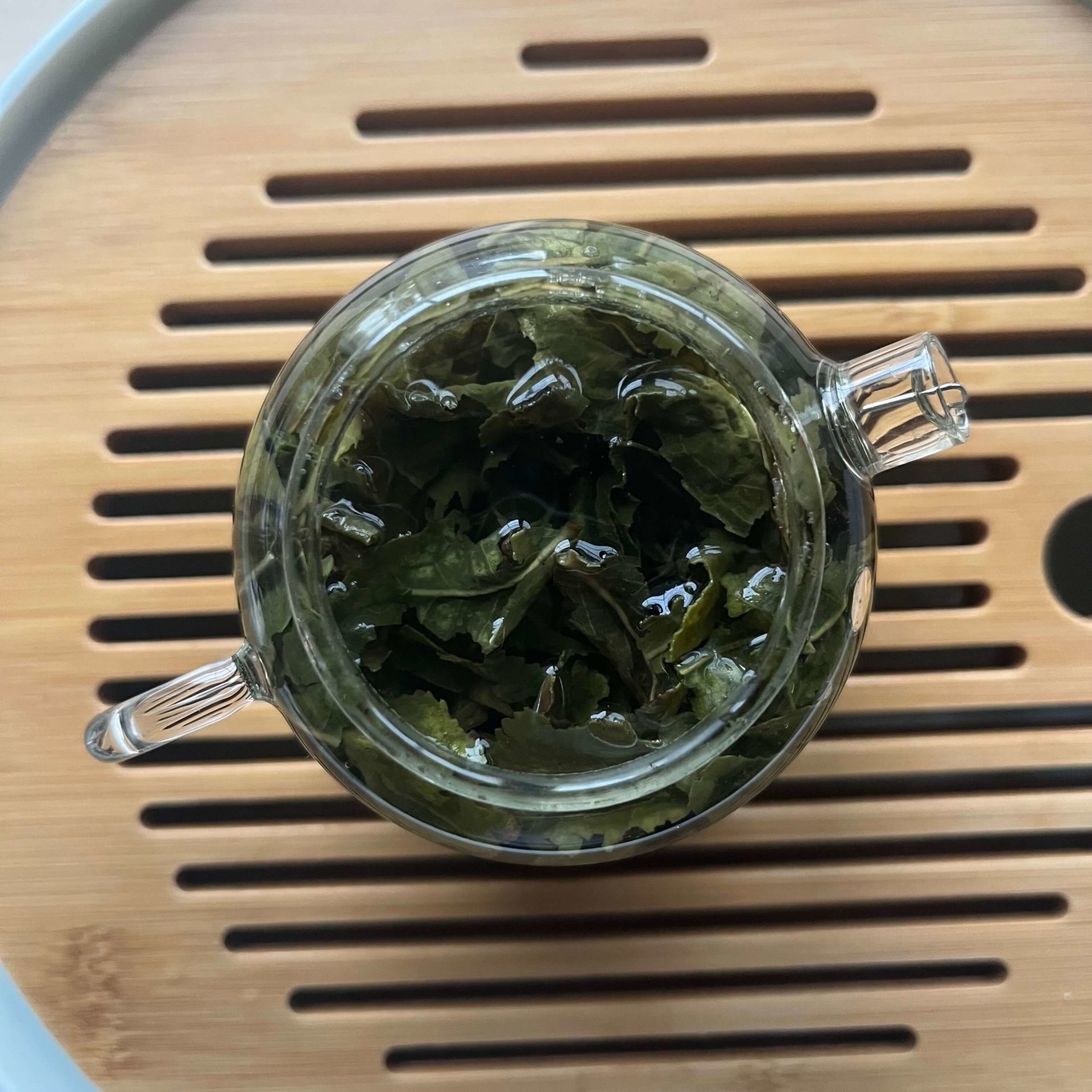
Pre-warmed gaiwan: I warmed the giawan vessel and cups then added the dry leaves. The smell reminded me of some of the sticky rice oolongs I’ve had in the past. The smell was sweet, vegetal, and floral. It was not at all what I expected!
Quick rinse: After a 5 second rinse, the liquor was a pale colour and had a very faint trace of vegetal notes.
Infusion 1 (1 minute): The liquor was a light neon yellow-green colour and the liquor was delicate with spinach/vegetal notes and lightly floral, nutty, and fresh cut grass undertones. There was a hint of dryness at the tip of the tongue. The leaves had partially unfurled.
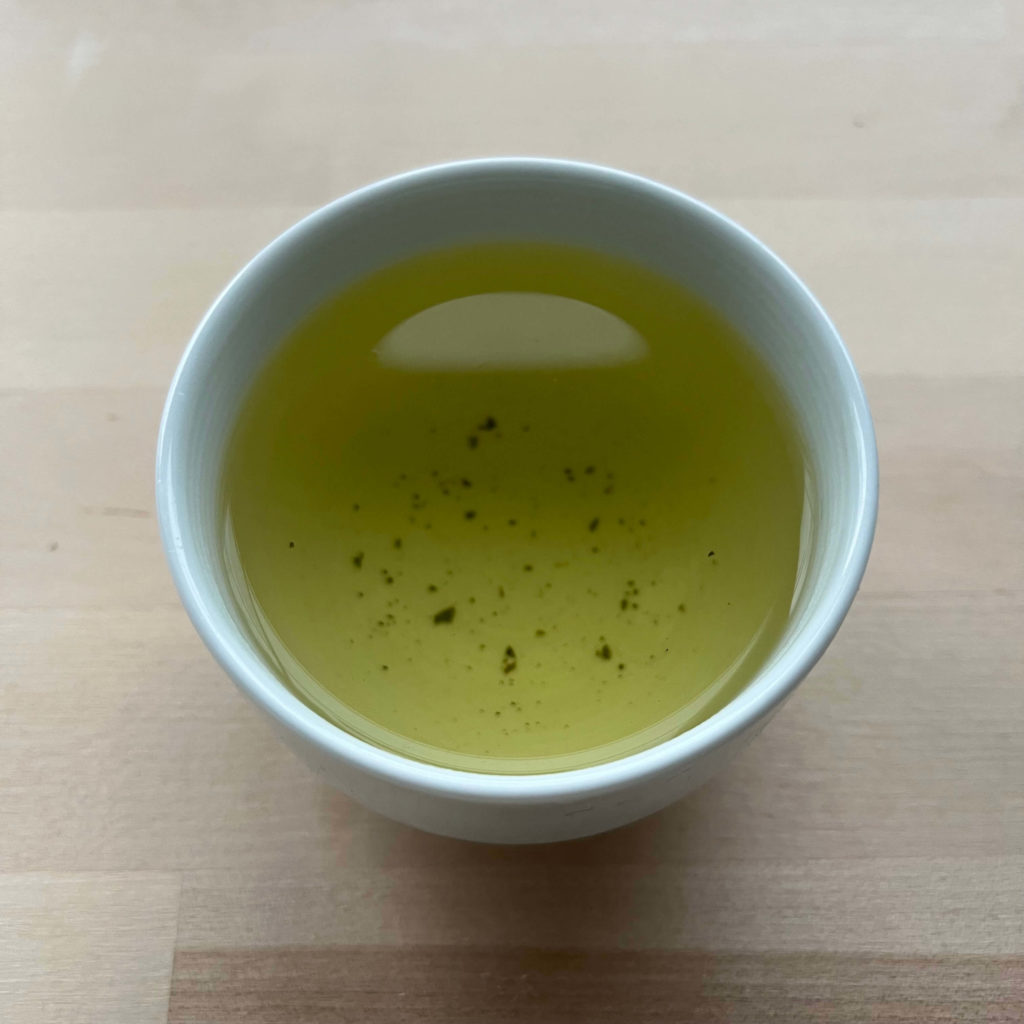
Infusion 2 (1 minute and 30 seconds): The bright neon green yellow colour liquor had small broken leaves at the bottom of the cup. It smelled nutty and vegetal but tasted more savoury like steamed vegetables and spinach. The sip ended with dryness at the tip of the tongue and the back of the throat.
Infusion 3 (2 minutes): A similar neon green colour as Infusion 2. The flavour was much less intense, with a quick release of vegetal flavours and nuttiness which dissipated just as quickly and became drying in the mouth.
By the third infusion, the leaves had unfurled. The dark olive leaves were medium-sized with some broken leaves and some full leaves. The unfurled leaves had a nice unified colour. It smelled like grass, forest and pine.
Long Gong Fu Session (Six Infusions – 5g per 100ml):
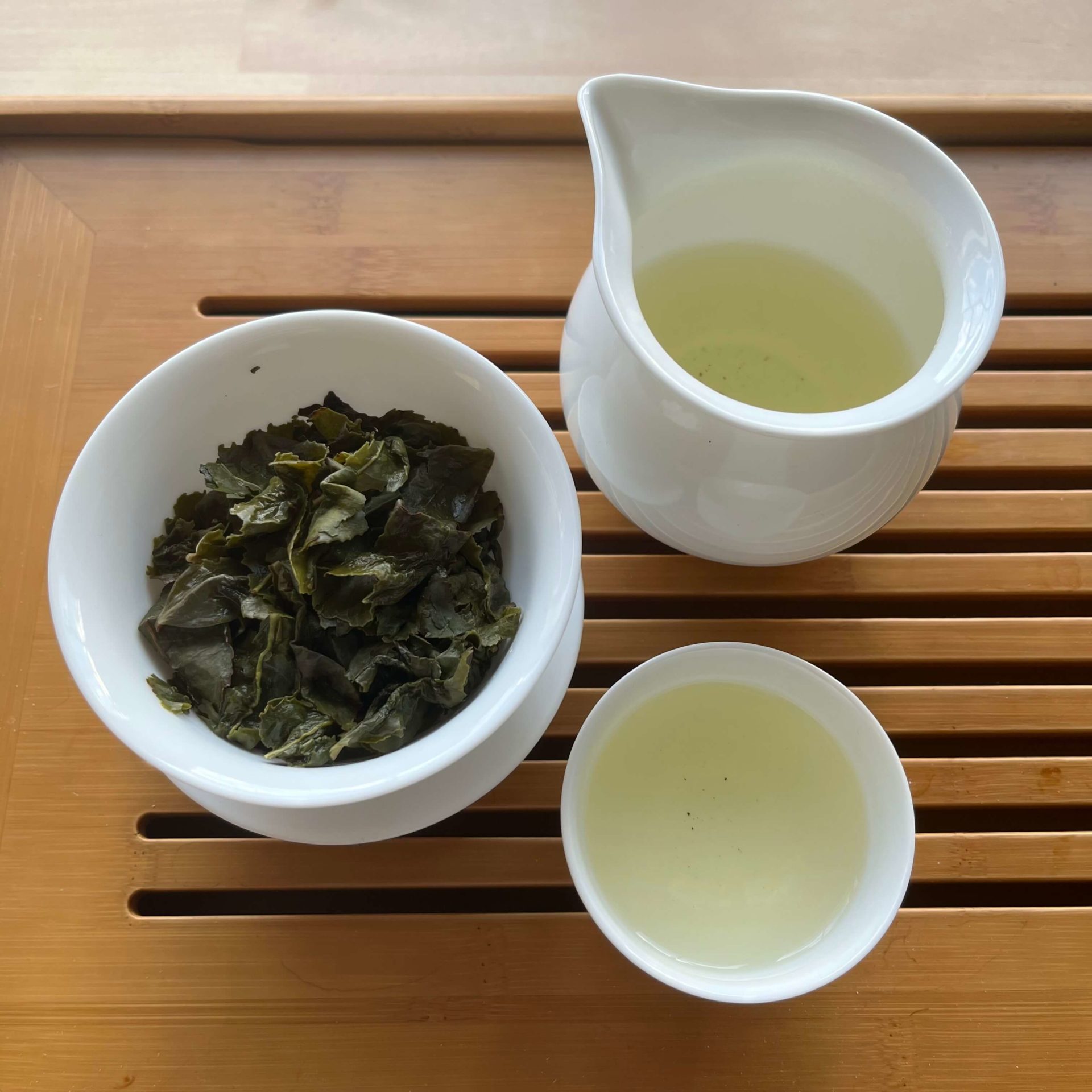
Pre-warmed gaiwan: Dry leaves smelled like sticky rice which was sweet, vegetal, and nutty.
Quick rinse: The pale yellow/green liquor had a crisp, fresh apple and floral smell.
Infusion 1 (10 seconds): The liquor was a pale colour with a faint sweet and floral taste and a hint of grassy and smelled vegetal.
Infusion 2 (20 seconds): Pale yellow lime colour liquor with a snow peas/sugar snap peas smell. While the taste was still faint, the liquor started to develop vegetal and fresh cut grass notes. It left dryness at the back of the throat. The leaves started to unfurl.
Infusion 3 (30 seconds): By the third steeping, the leaves had mostly unfurled. The liquor had a vegetal smell and released a nutty flavour followed by steamed vegetables and sweet peas.
Infusion 4 (30 seconds): The liquor was dominated by a floral note followed by dryness.
Infusion 5 (30 seconds): The taste of the liquor reverted back to the vegetal notes intertwined with the floral.
Infusion 6 (30 seconds): By the 6th infusion, the flavour is spent.
Since it was six infusions, there was no strong smell from the wet leaves.
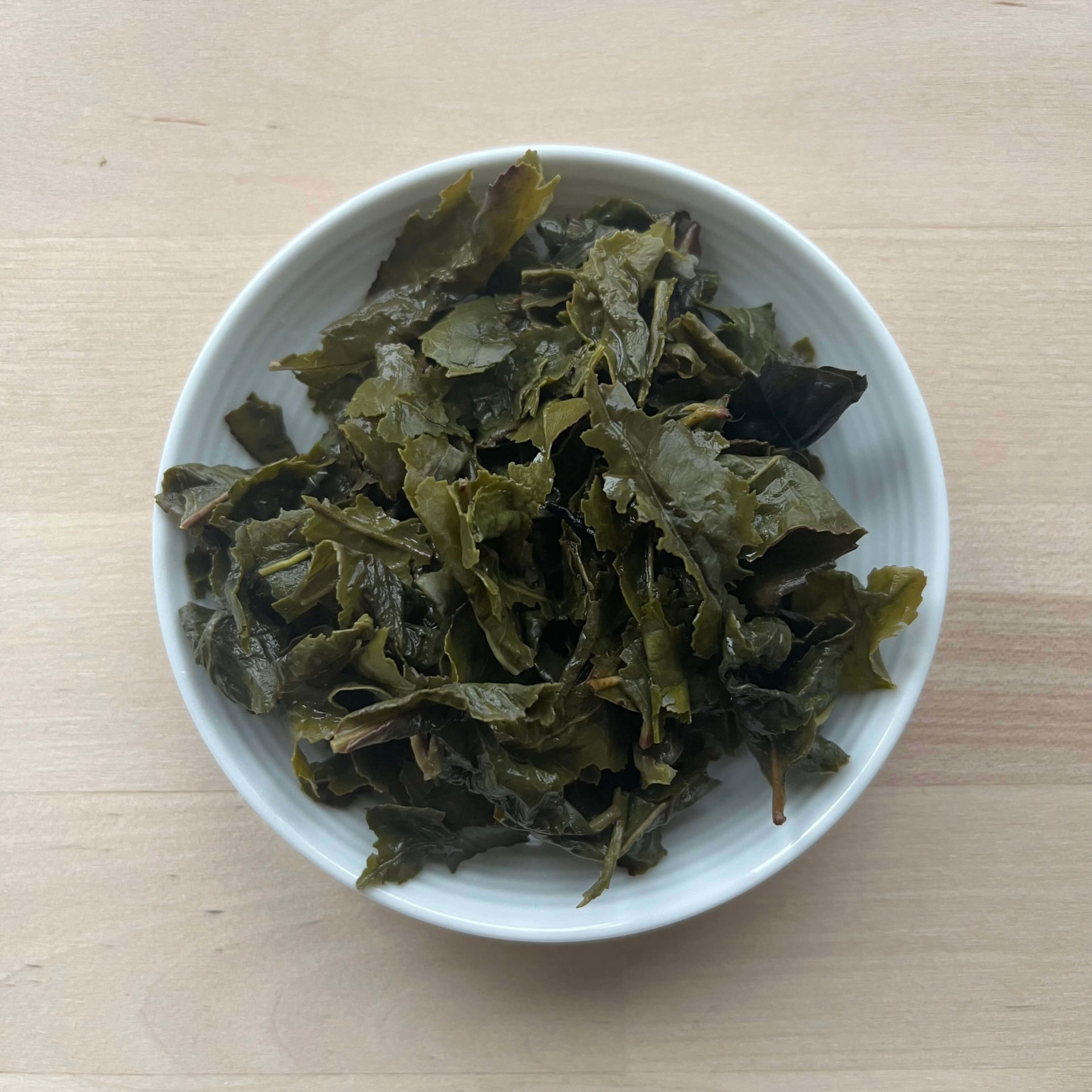
The overall flavour of the tea between the short and long gong fu sessions was dominated by vegetal and grassy notes. However, with the longer gong fu session (and shorter steep times), a floral and snow pea flavour also developed.
While the smell of the dry tea surprised me and reminded me of sticky rice oolongs, the tea was reminiscent of other Iron Goddess/Tie Guan Yins I’ve had in the past. This tea was a nice classic Tie Guan Yin with vegetal, grassy, and some floral notes. As expected, this oolong tasted nice with the dim sum and was able to cut away at the salt and grease (3.5/5 rating)!
- Type: Oolong tea
- Origin: Anxi, Fujian Province, China
- Caffeine: Unknown
- Ingredients: Oolong tea
- Company: Rare Tea Company
The question of the post: What do you drink with dim sum?
